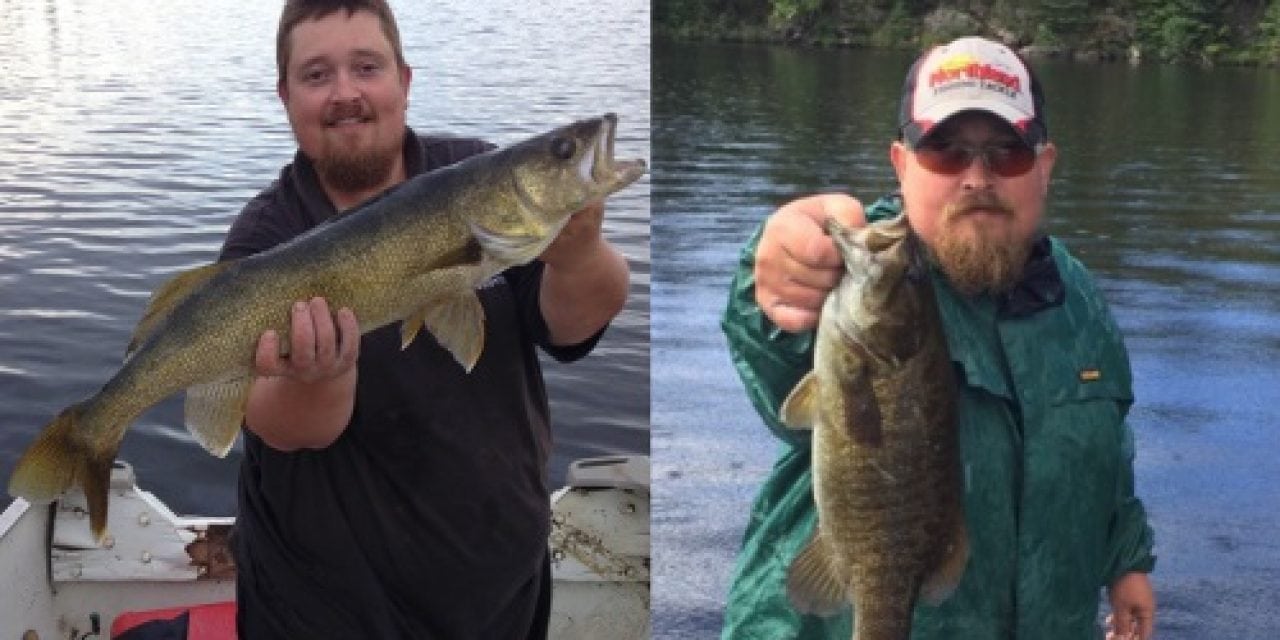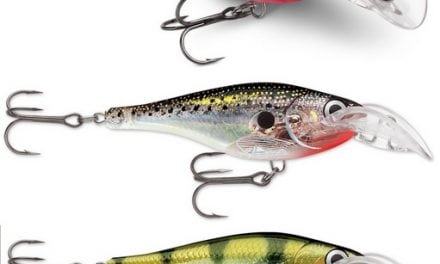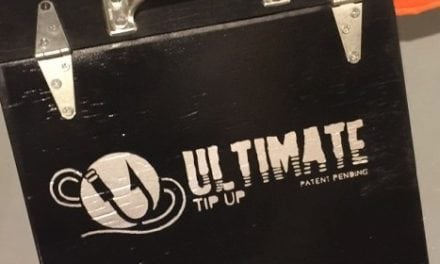
This 6,700-acre lake near Grand Rapids, MN, is the largest of a series of lakes on the Upper Mississippi River that includes Jay Gould Lake, Little Jay Gould Lake and others. Though its shoreline is well developed, the lake is deep, clear and has a reputation for producing above-average walleyes, according to Team Northland angler Brian “Bro” Brosdahl.

“Pokegama has diverse structure and a lot of productive water,” he says. “It’s got long narrow bays, wide sprawling bays, lots of humps and offshore structure, and the real beauty of this lake is that when the wind blows hard, you can almost always find a place where you can tuck in and fish.”
1. On the opener in mid-May, Brosdahl recommends fishing the humps, bars and points in Tioga Bay on the north end. “Walleyes that have spawned in the river make their way back to Pokegama through the Gould lakes and set up along these areas. If you can find young vegetation on these spots, that’s even better,” Bro says. “Salter and Sugar bays are other good spots for early walleyes.”

He recommends fishing a Fire-Ball® Jig-and-spottail shiner, or a leech on a live bait rig along the outside weed edges on major flats in the bays. “I’d also fish the features around Drumbeater Island and the flats west of the Hwy. 169 bridge over the Wendigo Arm the same way,” he adds, “and actually, these areas can be good through the entire summer, what happens is that the walleyes stay until baitfish move out; then they migrate toward off-shore structure.”

Anglers who haven’t been out after crappies before the general fishing opener will still find them in shallow, weedy bays this time of year on Pokegama. “Get on the trolling motor, move slowly, and cast-cast-cast,” says Brosdahl. “They could be anywhere in the bay, and you’ll have to find them.

Lure choices here include a minnow-tipped Thumper Crappie King,and Mimic Minnow® Spin, or try slowly retrieving a slip float rig with a small, minnow-tipped jig head.

2. “In the summer, as baitfish start moving out and major insect hatches occur,” the angler explains, “walleyes work their way to way to the humps and steep edges off islands and large main-lake points that drop into deep water.”
From about mid-June through September, he recommends focusing on these areas, especially mid-lake humps. “You’re likely to find fish on any of them,” he says, “so the smart thing to do is make good use of your sonar equipment.”
While there are dozens of spots in the main lake, as well as in Sugar Bay, and Sherry and Wendigo arms to the south, he says the finger coming out of Tioga Bay and the series of humps to the east of Drumbeater Island are excellent places to start. “Be sure to look around, though,” he adds. “There are hundreds of places like these that will hold fish.”
Because of Pokegama’s extreme water clarity, walleyes can get fussy, the angler explains. The early and late low-light periods are typically the most productive, as is fishing after dark. If the wind blows during daylight hours, focus on the windward side of the humps and points.
In these 22- to 28-foot depths, Brosdahl recommends dragging a live bait rig with a redtail chub or nightcrawler on an orange or chartreuse Super-Glo Attractor Hook. “Or, troll a bottom bouncer in front of a perch pattern or firetiger Baitfish Spinner Harness loaded with a ’crawler,” he says. “When you run into a pod of fish, it’s sometimes best to just sit on them and throw out a live leech under a Lite-Brite Slip Bobber.”
One particular presentation is too often overlooked, he adds. “When water temps get above 70, try a No. 5 Puppet Minnow in Green Perch or Glo Perch,” he says. “You can fish it vertically, or snap it along the bottom while casting or trolling. There’s a real good chance you could catch a lake whitefish doing this, too.”
Summertime smallmouths also use the humps and points, but look for those that have more rocks and fewer weeds. “In general,” says Brosdahl, “anyplace that has a shallow-water buoy on it is a great place to cast for smallies.” Tioga and Poole bays on the north end hold a lot of bass, but Brosdahl also fishes the Wendigo Arm below the Hwy 169 bridge. “This is one of my most favorite areas to cast for bass.”
Try an Impulse® Fatty Tube on a ¼-ounce Inner-Tube® Jig, or a ¼- to 3/8-ounce Jungle Jig® tipped with a chunk craw. Other options include a ¼- to 3/8-ounce spinnerbait, or an Impulse® Jig Crawler on a ballhead jig.

3. In the fall, late September through October, and some years into November, big redtail and creek chubs become major players for walleye anglers. Fish them on bait rigs along the steep, rocky edges of humps, islands and points. “Pokegama is known for trophy-class walleyes, and anglers have a real chance to flirt with an 8 to 10 pounder—anytime, really, but especially during the fall—so don’t be afraid to use a 6- or 7-inch baitfish. And don’t be surprised if you catch a double-digit pike now, too.”
Lake maps courtesy of Navionics. For more information, visit: Navionics.com
Vital Stats
Pokegama Lake, Itasca Co., MN
Surface Area: 6,709
Shoreline: 58 miles
Maximum Depth: 112 feet
Water Clarity: 16.5 feet
Species Present: Walleyes, Northern Pike, Smallmouth Bass, Largemouth Bass, Lake Trout, Lake Whitefish, Yellow Perch, Black Crappies, Bluegills, Green Sunfish, Hybrid Sunfish, Pumpkinseeds, Rock Bass, Bullheads, Ciscoes, Redhorse, White Suckers, Common Shiners, Spottail Shiners, Golden Shiners, Mimic Shiners, Rainbow Smelt, Johnny Darters.
The post Pokegama Lake and a Tip On Early Fall Walleyes and Smallies appeared first on ODU Magazine-North America’s #1 Digital Fishing Magazine.
















